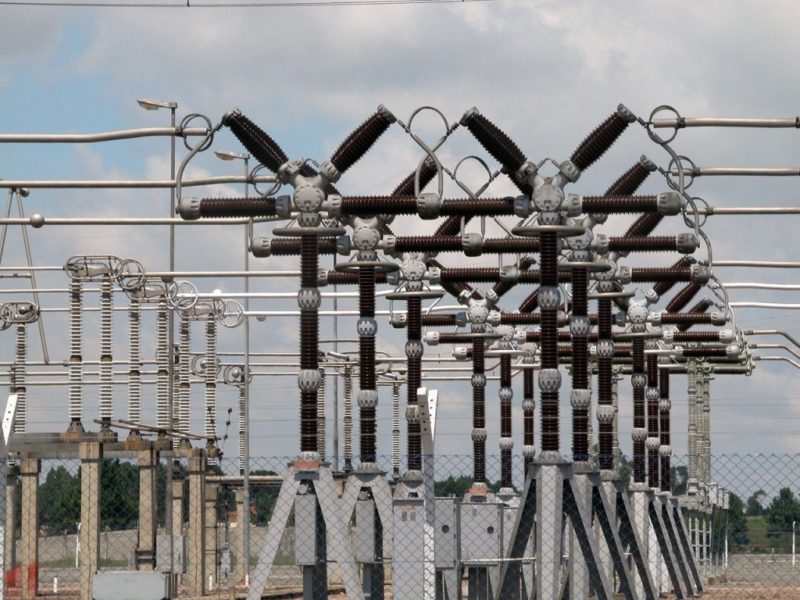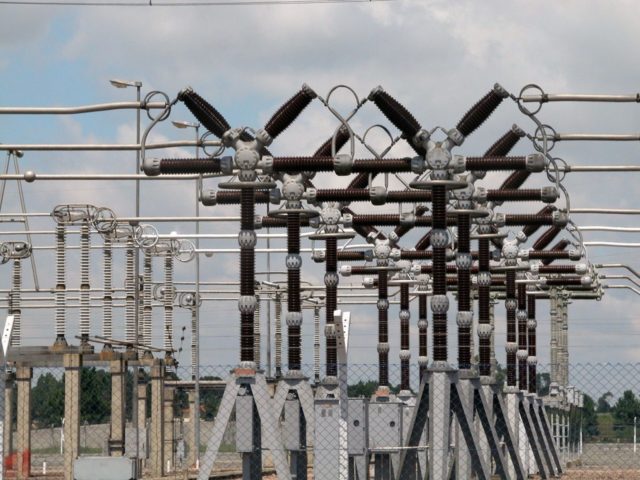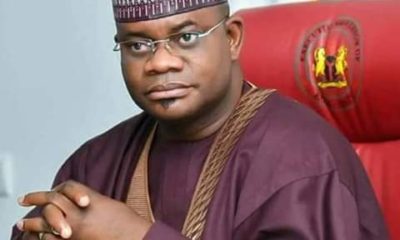National Issues
Why the Post-privatisation Era of the Nigerian Power Sector Is Failing to Deliver -By Yusuf O. Ali


I remember the almost unequivocal celebrations that welcomed the successful privatisation of the 16 successor companies of the PHCN in late 2013. Many Nigerians believed that the private sector era would bring the hot days and dark nights that had been the hallmark of the NEPA/PHCN period to a sharp end. As any Nigerian would testify, the 2013 privatisation has greatly underwhelmed. Perhaps there is no greater indicator of this than an August 2016 Transmission Company of Nigeria (TCN) operational report in which the TCN claimed that generation hovered at around 3000MW while the estimated peak demand for grid-connected consumers was 17,720MW; leading to a 14,700MW (83 percent) shortfall.
The root causes of the decay of the Nigeria Electricity Supply Industry (NESI) are numerous and sometimes controversial (as various actors try to distance themselves from the problem). So rather than delve into that dungeon of issues, I would rather like to provide a summary of the state of play of where we are now and how the NESI has found itself in an impasse that threatens to stop Nigeria from witnessing any of the benefits that were envisaged during the formulation of the National Electric Power Policy (2001) and Electric Power Sector Reform Act (2005).
First, as I have mentioned above, there is a significant capacity shortfall in the power sector. While installed capacity is actually closer to 11,000MW, operational capacity has never exceeded 5,500MW. This is as a result of numerous operational and maintenance challenges facing the plants. Gas shortage is undoubtedly the biggest cause of the operational outage; about 80 percent of Nigeria’s grid-installed capacity is gas-based. The gas shortage was initially due to the inability of Nigerian gas companies to produce the quantity needed by the plants but has been exacerbated in recent times by ever-increasing militant attacks on Nigeria’s fragile gas pipeline infrastructure.
The main consequence of this capacity problem is that it has led to load shedding – the process of temporarily cutting electricity supply to grid-connected consumers in order to match the demand (load) with the available supply. This has consequentially meant that the quality of supply, QoS, (consumer demand supplied by the grid /total demand) has been low most of the time. As a result, Nigeria has continuously witnessed increased penetration and use of captive (diesel and petrol) generating sets. There is no argument about the cost competitiveness of captive generators in relation to grid supply; the latter is much cheaper at current rates. However, as more people have spent more money running generators, over which they have total control and supply reliability, their willingness to pay for grid electricity has dropped.
The willingness of the public to pay for grid electricity is also not helped by the lack of transparency in the tariff determination process, which has led many to believe that the tariffs are merely set to rip them off. With people not paying tariffs, DISCOs have witnessed incredible revenue shortages. Since DISCOs are the only revenue recuperation actors within the NESI supply chain, their revenue shortages have impacts further up along the chain. For example, if DISCOs do not have enough money, they are unable to pay NBET (the wholesale bulk-trader), who in turn is unable to pay GENCOs, and in turn gas companies.
The most pertinent but often unseen impact of this revenue shortfall is the erosion of investor confidence that it leads to. Even if Nigeria is able to operate its entire installed capacity, there would still be a 6000MW (35 percent) supply shortage. Therefore, it does not take a genius to work out that Nigeria is in dire need of new investments in capacity, especially if the industrialisation that is envisaged by the Nigerian government comes to fruition. For the sake of simplicity, I am going to ignore the obvious investments that are needed in transmission and distribution.
For Nigeria to see the sustained capacity investments that it needs, private investors need to see a functional electricity market in which tariffs are cost reflective and DISCO tariff collections are at near 100 percent efficiency. These preconditions are rational because private companies are for-profit businesses, and as such they are very reluctant to make investments in unrewarding markets like the Nigeria Electricity Market (NEM). While people like myself disagree with the logic behind the refusal of Nigerians to pay their electricity bills (excluding exorbitant estimated billing customers), the aggravations are not too difficult to understand.
Altogether the NEM is in a calamitous stalemate because if the tariff and collection preconditions described above are not met, Nigeria would struggle to attract private investments in new capacity. Likewise, if the capacity and QoS of service do not improve, it will be difficult for customers to accept higher (cost-reflective) tariffs and increase their willingness to actually pay. So the question becomes: Which side of the divide will blink first? The consumers or the investors?
Like all truly complex issues, the answer to the question is more nuanced than most hardliners would think. For the NEM to make progress, there is the need for simultaneous shifts from both the consumers and the investors, with the government being the important middleman in all of these. That said, in spite of the simultaneity, the “first” move is on the side of the consumers. This move addresses consumer acceptance of higher cost reflective tariffs and improved commitment to the payment of bills.
Consumers cannot be expected to move without inducement(s). The first and probably most important inducement affects tariffs. Like all Nigerians, I have become used to the phrase “cost-reflective tariff” without ever understanding what this means numerically. After every tariff adjustment (usually an upward review), the phrase is somehow expected to make the tariff acceptable to Nigerians. It is clear that this tactic is flawed and hence has continually failed.
There is the need for wholesome tariff openness. It is important that Nigerians at least have an idea of the various cost elements that make up the tariff. This increased knowledge will make it possible for consumers to accept (albeit reluctantly) any tariff reviews that are necessitated by external factors like foreign exchange costs, etc.
Increased tariff openness also gives the NERC and DISCOs a better campaign tool. I stumbled upon some numbers about the cost of operating petrol and diesel generators and decided to create a costs (fuel only) comparison of these generators with the grid. Based on my calculations, the cost per kWh of diesel and petrol generators are N98/kWh and N118/kWh respectively. In contrast, residential tariffs currently stand at around N23/kWh. Highlighting this differential should on its own provide NERC/DISCOs with compelling arguments to be able to improve consumer acceptance of the often proclaimed “cost reflective” tariffs.
In reality, the inducements above will only be effective if the consumers can see light at the end of the tunnel. This light must come in the form of pledged capacity increments and QoS improvements, against which the maintenance of new increased tariffs will be pegged. This means that customer tariffs can be increased for a while ahead of expected QoS improvements. If by the agreed period, the agreed QoS levels are not met, tariffs will revert back to pre-increment levels.
The timely delivery of the QoS improvements means that investors need to move at virtually the same time as the customers. Under the transitional electricity market, the responsibility of agreeing capacity additions lies in the hands of the government. Therefore the government through the Nigerian Bulk Electricity Trading (NBET) company needs to reach wholesale electricity purchase agreements with prospective investors. Many industry experts have pointed out that the NBET’s current $800 million capitalisation is not sufficient for the NBET to project and instil investor confidence in the generation sub-sector. These experts have argued that considering the scale of the tariff collection deficits that have plagued the NEM, potential investors in generation want to see an NBET with a significantly higher capitalisation; this will provide the investors with the confidence that the NBET has the financial resources to fulfil its back stopper obligations on any new PPA.
With the crash in oil prices and the exaggerated effect this has had on the coffers of the Federal Government, it is difficult to see a way for NBET to raise the required liquidity outside the debt market. In October 2016, the Senate ordered the NBET to immediately stop its plan to raise a N309 billion bond to be used to cover the shortfall in the NEM. Agreeing and adopting a way forward with respect to raising funds for the NBET is critical for winning investor confidence and consequentially key to freeing the NESI from the stalemate in which it is currently locked.
As a wise man once said “you cannot continue to do the same thing and expect different results”. Therefore, NERC has to adopt the suggested nuanced method (or any other one) of making the consumers and investors simultaneously make the tariff acceptance/prompt payment and QoS improvements (via capacity investments) needed from them respectively. Both of these are essential if the NEM is to find a way around the impasse that threatens to make the post-privatisation era a sorry continuation of the gloomy NEPA/PHCN period that Nigerians would rather consign to the depths of forgotten history.
Yusuf O. Ali, a doctoral candidate in the Department of Engineering, University of Cambridge, completed an MPhil in Nuclear Energy from Cambridge in 2013. He can be reached on e-mail at: yoa20@cam.ac.uk, and Twitter: @YalyAli



















